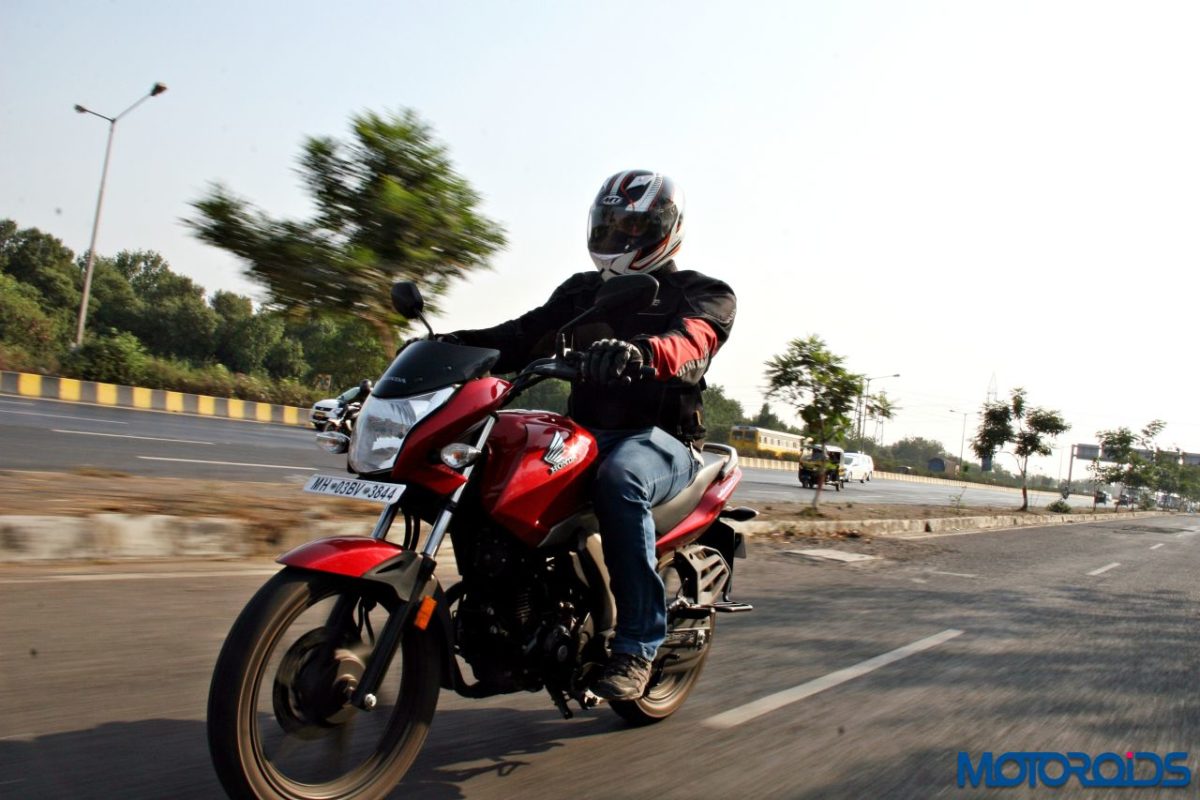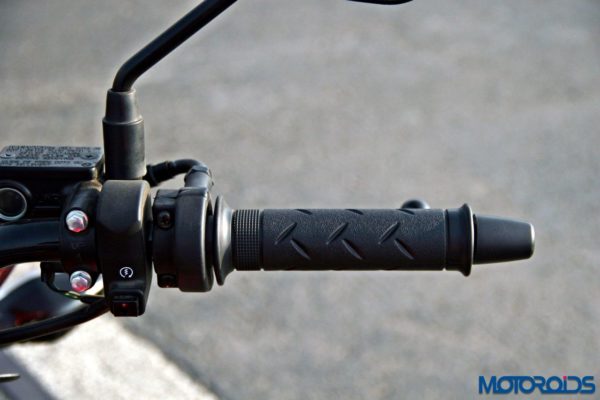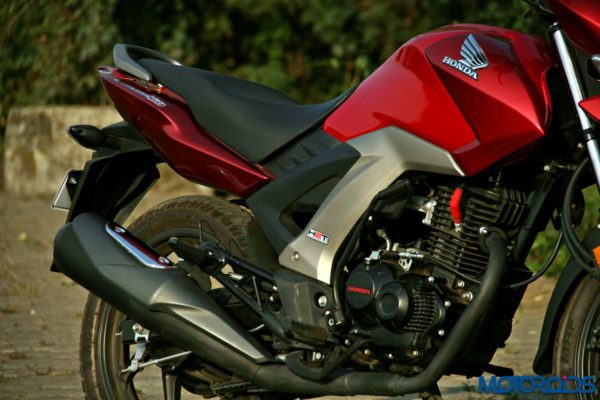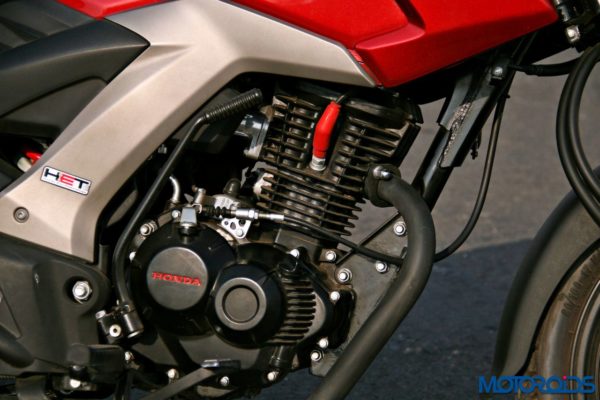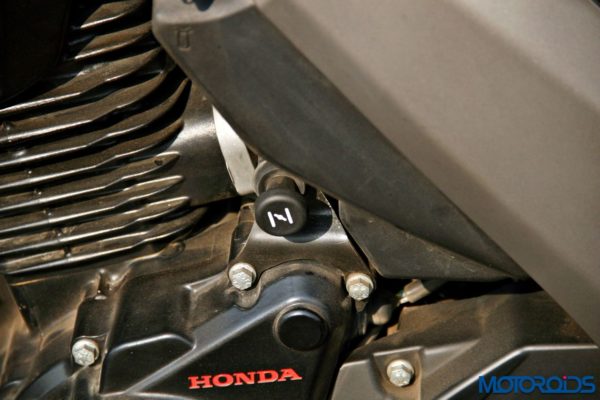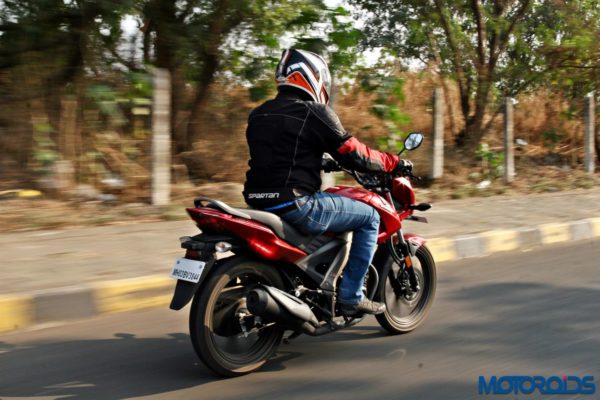Instrument cluster and switchgear
We believe that the instrument cluster and switchgear deserve a special mention here. The instrument cluster on the new CB Unicorn is an all digital unit and comprises of a speedometer, odometer, two trip meters, tachometer, fuel gauge, clock and tell-tale indicators. The new display is impressive and easily visible even during daytime. The Select and Set buttons too are quite good. As much as we were impressed by the new instrument cluster, the switchgear doesn’t come cross as too impressive a unit with its minimalistic set-up. It also looks quite old and basic in design, though its been built very well. We would have liked to see an engine kill switch here. The slim handlebar grips have a grippy, quality rubber coating over them and feel very nice to hold.
Engine and Performance
The engine is one of the biggest changes on the Unicorn. Nearly a decade after donning a 150cc motor, Honda CB Unicorn has received an performance upgrade, a relatively mild one though. The previous Honda Unicorn was powered by a 149cc carbureted single-cylinder motor that delivered about 13 bhp of power and 12.84 Nm of torque. The new Honda CB Unicorn 160 receives a slightly more powerful 162.7cc carbureted (still no fuel-injection) single-cylinder engine that delivers a relatively healthier 14.5 bhp of power at 8,000 rpm and 14.61 Nm of torque at 6,000. The CB Unicorn 160 is also 11 kilograms lighter than the 150cc variant which gives the motorcycle a better power-to-weight ratio. The instrument console witnesses a tacho redline marked at 9250 rpm with reading going well above 11,000 rpm
But don’t be mistaken to believe that this is a bored out version of the previous 150cc motor. Honda insists that it has developed the engine from ground up and the motor has been tuned to deliver a sporty, rev friendly character. There is a characteristic grunty sound to the engine, which is poles apart from the buttery smooth nature of the previous engine. But that effect of aural gruffness has been engineered into the power plant to give the bike a throaty, sporty feel, and not something that the lovers of Honda smoothness should bother about. The engine is still smooth as ever and none of the sound gets translated to the handlebars or the foot-pegs as vibes, even at the top of the rev-counter. Most of the power is concentrated in the mid-range but that does not mean that the pulling power at the lower end has suffered. The new Unicorn has enough torque at the bottom of the barrel to ensure the bumper to bumper city traffic conditions can be dealt with, without having to shift into too low a gear.
The new Unicorn delivers dependable, punchy performance, if not the top-of-the-pile, dopamine releasing rush. The top speed claimed by Honda stands at 106kph while we were able to clock 120kph mark (speedometer indicated). The top gear is relatively tall which is ideal for highway cruising while the motor revs up easily in lower gears for quick sprints in between traffic.
The CB Unicorn 160 receives Honda Eco Technology and the ARAI fuel efficiency figure stands at 62 kmpl. Not bad considering the fact that the motorcycle delivers more power than the previous Unicorn. The efficiency, along with the 12-litre fuel tank, can eat up more miles than many of the motorcycles in the segment.
Braking too has improved, especially after the addition of Honda Combined Braking System (CBS) technology. The braking duties are performed by 240mm disc at the front and 130mm drum with CBS at the rear. The initial bite is followed by a responsive and well executed braking which is decent by the commuter standards. The motorcycle is connected to the road through MRF Nylogrip Zappers tubeless tyres (80/100×17 up front and 110/80×17 at the rear) which perform the duty rather well in normal circumstances. Under sharp braking, however, we heard the tyres wailing for mercy before we expected them to. The tyres are acceptable for everyday use and for the odd weekend trip out of town. If you are, however, a more serious, properly trained biker, you would be left somewhat wanting in terms of grip levels from those tyres.
Click here to read more about Ergonomics, Handling and Verdict>>>

